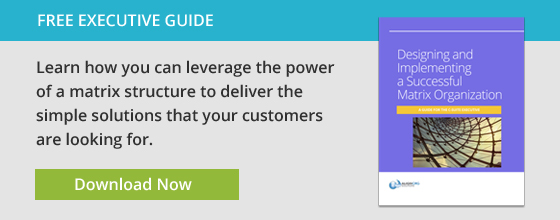True organization transformation requires more than mere structural change. It demands that the organization does things differently and that executives, leaders, and ultimately every employee understands the organization’s intentions and strategic “difference.” This calibration of actions and thinking to drive a consistent strategy is organization alignment and leads to true organization transformation.
Defining alignment and organizational transformation is the easy part. To get there, the organization and its leaders must be willing to engage in high-stakes conversations that put the organization strategy first and individual’s self-interest second.
To achieve true organization transformation, leaders, executives, and employees must make different choices about how the business will operate and how it will deliver value. This may require new behaviors shaped by how policies are set, processes are run, structures are set up, roles are defined, behaviors are incentivized, and performance is measured. Making different choices may seem simple, but it comes with a lot of political risk. Doing something different may alienate key parties or a strategic ally. It might even undermine your own power or ability to influence the organization in a certain direction because you’ve given up decision rights, resources, or have taken on responsibilities for which you may not have the expertise.
Making these choices requires choosing strategy over self-interest, having tough conversations, and making sacrifices. Politics is about winners and losers; it is about giving things up and making sacrifices that, in the best case, are in the service of the business and its strategy.
Good organization design can help with the politics of change. Organization design is the science and art of aligning systems in the business to help the organization accomplish what it needs to achieve marketplace distinction. The best organization design processes acknowledge the politics of decisions and how design decisions will affect key stakeholders’ interests.
There are two things that can facilitate high-stakes conversations and can lead to better organization alignment and transformation:
Having a great process with tools. At AlignOrg Solutions, we follow a process that identifies the organization capabilities that must be set-up and configured to execute a strategy and win in the marketplace. Once this is set at a macro level, we adjust the choices and systems on a micro level to ensure alignment across the entire organization.
Along with the process, we utilize tools that help executives step through the tough conversations that need to happen to orchestrate transformational change and organization alignment. For example, one tool we use helps leaders have meaningful conversations by identifying what work is the most strategic to the organization. Often, organizations put more emphasis on work that demands the most resources or carries the most political clout. This tool helps leaders break traditional thinking or tendencies and instead identify the work that can lead to the most marketplace value and drive business results.
Assertive facilitation. In conjunction with a good process and tools, getting through tough conversations requires assertive facilitation. This does not necessarily mean a successful facilitator has all the right answers, but rather that s/he knows the right questions to ask and can push leaders to think differently about their strategic choices and decisions.
A good facilitator understands the connection among organization systems and can help leaders understand the implications of their choices. For example, if the design team makes a change to the IT help desk intake process, how will this affect the rest of the IT work? How will it affect the structure of IT? How will it change the metrics around response time, etc.? How will it change the incentive structure?
A good facilitator can help foresee these implications, help mitigate the risks, and help ensure leaders make the best decisions in alignment to the organization’s strategy.
To have high stakes conversations that lead to alignment and true transformation, executives and leaders must put strategy before self-interest and be willing to stand on the balcony to see the whole organization system rather than their small piece of it. Having a trusted change partner can help leaders see across the organization and understand how all systems work together and connect with other parts of the organization.
Organization transformation is about HOW we do business differently to achieve strategic outcomes rather than just structural, technological, or processual change. If you get through decisive conversations and you feel like there are definite winners and losers and that certain coalitions got their way, the organization transformation may have happened in form, but it may struggle to produce lasting business outcomes.
The best results come from tough, high-stakes conversations that follow a good organization design process and include assertive facilitation by a trusted change partner. These tough conversations help executives and leaders make the best organization choices to execute strategy and deliver results.






